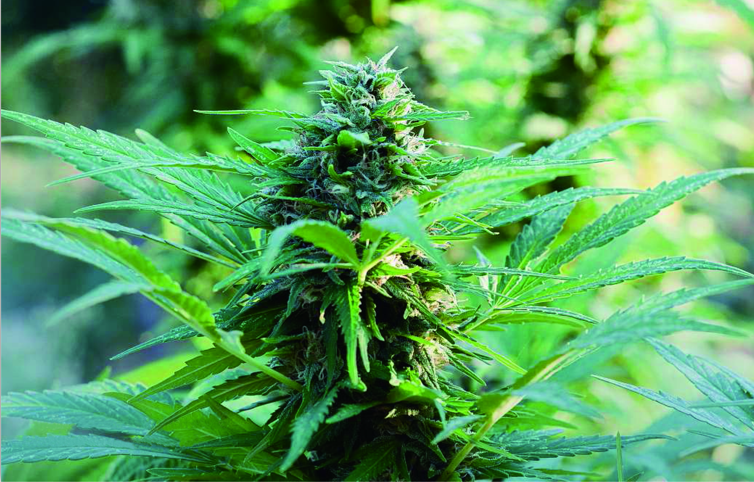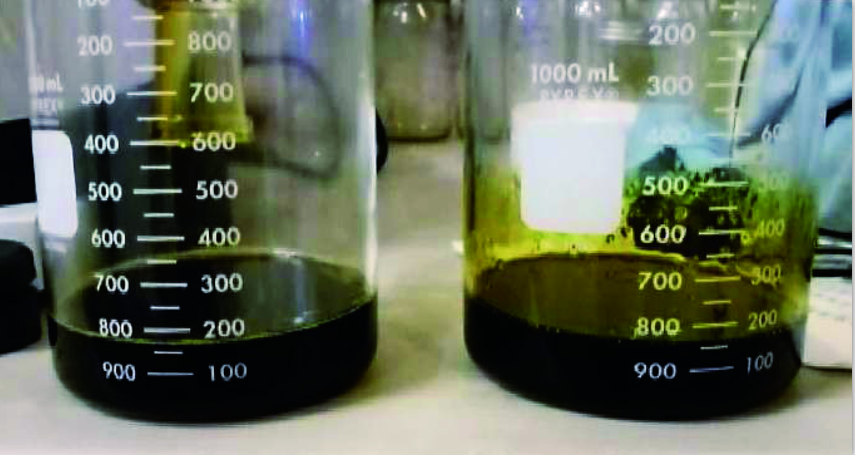THC, the psychotropic ingredient in cannabis, can cause anaesthesia. In addition, it has many therapeutic effects. At present, the German government is discussing how to legalize medical cannabis. Hemp oil extraction technology still has great potential for optimization.

California Gold Extraction Technologies Inc. is a manufacturer specializing in the production of medical tetrahydrocannabinol oil (THC) for California, USA. As an integral part of the refining process, crude cannabis oil is dissolved in a large amount of ethanol, then filtered, and finally evaporated and separated from cannabis oil. At present, the rotary evaporator is most commonly used in the fractionation of these suspensions; however, with the increase of suspension volume, more functions are required for the evaporator, and the separation time of ethanol and cannabis oil will be longer.
The evaporator Rocket 4D Synergy (see Figure 3) developed by Genevac will be a potential device for cannabis oil production. This evaporation equipment system provides a continuous, automated evaporation process, with greater and more flexible evaporation capacity than other similar equipment in the market. During the test, the control equipment participating in the test is a rotary evaporator; the purpose of the test is whether the capacity of the Rocket evaporator with other auxiliary advantages is really higher than that of the standard evaporator in the market.
Production and extraction of cannabis oil
Some unprocessed cannabis extracts were extracted, and the extracts containing cannabis substances were extracted with supercritical carbon dioxide (SFC). In addition to THC tetrahydrocannabinol oil, the extracts also contained other cannabinol and various fat and wax components. In order to separate these inert substances from the oil and to concentrate the active ingredients in the oil, a refining process called “wintering” is often used. In the process of winterization, the crude extract is dissolved in a large amount of ethanol and filtered, then ethanol is removed and pure THC tetrahydrocannabinol oil is obtained.
The same capacity (two liters) of the wintered extract solution was added to the two comparative evaporators, and the temperature was set at 50 degrees Celsius. In the rotary evaporator, evaporation is carried out in a steaming pot, while the Rocket 4D Synergy evaporator controlled by thermal energy evaporates under the control of temperature control system, which produces low vapor pressure.
In order to maintain the correct evaporation rate of rotary evaporator, continuous inspection and monitoring are needed. Not only the liquid depth in the evaporator bottle and the rotating speed of the evaporator should be coordinated and matched, but also the cooler should be constantly monitored and refilled. In order to empty the diluent collected in the collection bottle, the rotary evaporator should be stopped at least once during its operation, and the system should be closed manually according to the actual conditions of the evaporation process.
The working temperature control of Rocket evaporator is an intelligent temperature control system, which can automatically adjust according to the type of diluent used. The average boiling point control method is used in this comparative test. After the evaporator loads the extract and chooses the control mode, the system will enter the working state without manual intervention. In Rocket evaporator, pressure regulation, temperature regulation and monitoring during the evaporator operation are all completed by the system itself. After the evaporation process is completed, the system will automatically shut down and stop running.
After evaporation, the content of residual ethanol in the dried samples will be determined by headspace gas chromatography.
The evaporation process of Rocket evaporator lasted about 60 minutes, while that of rotary evaporator lasted about 80 minutes. The amount of ethanol separated from the two evaporators is basically the same: about 1.4 liters. The two extracts obtained by the same evaporation were about 200 mL each (see Figure 2).

THC tetrahydrocannabinol oil after winter: the extract after evaporation in rotary evaporator on the left side and the extract after evaporation in Rocket 4D Synergy evaporator on the right side
Data on residual ethanol can be found in Table 1. The content of residual ethanol in the extract obtained in Rocket evaporator is high, but it still meets the requirements of deviation limit value. The residual ethanol content will be further reduced in the future through the easy-to-operate parameter input of Rocket evaporator (e.g., the final drying time parameter).
Despite the slightly higher residual ethanol content in the sample, the Rocket evaporator has been rated as an efficient alternative solution. The time required for the whole evaporation process is obviously shortened. The evaporator can achieve continuous operation. According to the specific type of Rocket evaporator, the monitoring of the operation process can be omitted and manual intervention is no longer needed. It can also refine cannabis oil in parallel while evaporating ethanol. It may also separate diluting solvents at night or in conditions where there is no need for manual monitoring of the system.